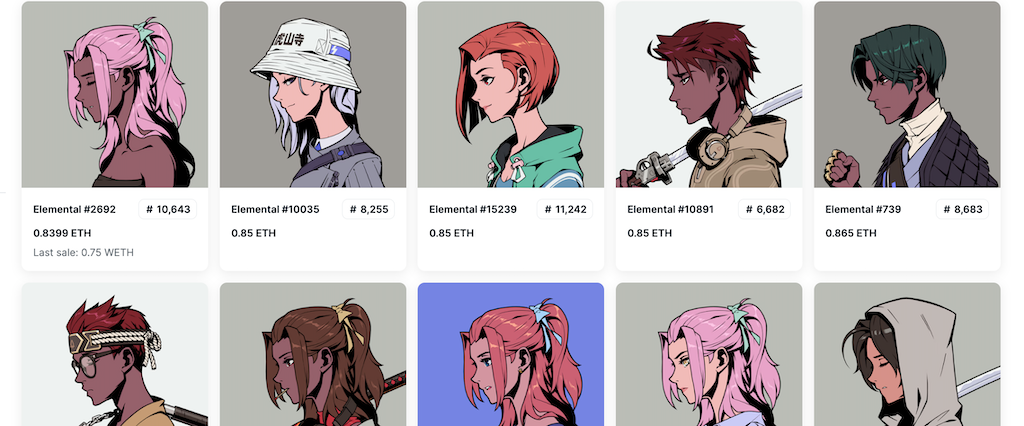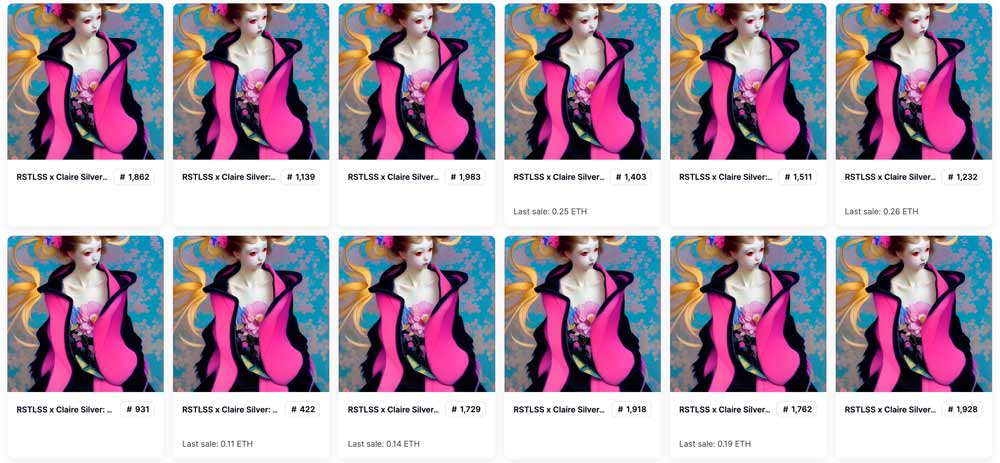The traditional art world has had a long, venerable tradition of issuing limited editions for certain highly prized artworks. But now that more and more of the art world is moving online and the focus is on digital art — particularly blockchain art — what are the new rules and conventions?
First, let’s bring the uninitiated up to speed.
There’s a fundamental difference between limited editions and reproductions in traditional art. As the Artwork Archive explains:
An edition is part of a set of original works of art intended for graphic reproduction and produced by or under the supervision of the artist who designed it. These are images or casts that are produced in multiples. Examples of editions include printmaking techniques like etchings and lithographs, fine art photography prints, bronze castings, ceramics, etc.
Each work in the edition has unique qualities and can vary slightly because each one is created individually.
A reproduction, on the other hand, is considered a copy/facsimile of the original work—not created in the same medium as the original artwork, usually using photomechanical means. So, not an artwork itself.
In fact, producing a reproduction does not typically involve the original artist.
The article goes on to explain that limited editions “have a fixed number of prints from the beginning of the print run … and no more can be created after they are all sold.” That’s a key selling point for those who’ve purchased a limited edition. Typically, you might see a trad artwork come in 10 or 20 editions, but the number varies and could be as high as 500 in some cases.
Enter the Internet and the blockchain, where the customs are still evolving.
Editions on the blockchain

On certain blockchains such as Nifty Gateway and Tezos’ Objkt, fx(hash) and Teia, we’re seeing a move away from expensive 1 of 1 art and toward more affordable art in open editions or limited editions. Fine art photography in particular has made a big move toward the editions model.
Cath Simard, a Canadian-born National Geographic photographer, digital artist and educator with an eye-popping portfolio of nature photography, wrote in a recent Twitter thread:
“Back in 2021, editions were seen as cash grabs. Today, they are wildly accepted and appreciated by collectors. … Back in 2021, artists were releasing large collections and a lot of supply. Today, scarcity seems to be a better approach to take. Back in 2021, if you did not sell out instantly, you failed and the FUD was hardcore. Today, drops take longer to sell, might not even completely sell out, and we still consider them a win.”
She added: “I went the edition route and did 250 ETH trade volume while my peers did the 1/1 route selling for 15 ETH apiece but we still ended up with the same overall trade volume in the end.”
It’s important to keep in mind that some collectors are fussy about which blockchain they buy NFTs on (such as Ethereum maxis), while others care more about the art and they’re OK with buying a piece that’s minted on Tezos or Polygon.
What attracts collectors to editions?
Artnome, one of the best-known blockchain art collectors, estimated he holds 100 artworks on Ethereum and 1,400 on Tezos. He told me that when he considers when buying edition artworks, “My thoughts generally go in this order:
– Do I love the art?
– Do I want to see the artist succeed/grow?
– Would I be sad if I didn’t collect it?
– Can I afford it? (This is where editions come in, typically making it more affordable.)”
Summer, a collector who tweets @Taebfar, added this about limited editions: “I consider the following:
1. The style of the art.
2. The message within the art.
3. The artist.
4. The message the artist is trying to convey.”

It’s probably fair to say that the overwhelming majority of art sold on the Tezos chain today comes in editions, while most NFTs on Ethereum remain 1 of 1s (that is, an edition of one). But that’s chiefly a function of the kinds of NFTs being sold. Most NFT projects continue to launch generative art drops of thousands of collectibles that vary in small ways from each other. (To be sure, those differences seem important to the holders but often seem silly to outsiders.)
But even those differences are sometimes less than meets the eye.

The conceit that you’re truly buying a wholly original, unique work falls by the wayside when you encounter example after example of NFTs where you literally can’t tell the difference between one or the other. Take the highly touted Azuki project, where its Elementals release sent the original project’s floor price plummeting, with threats of legal action to boot.
Even the bias toward 1 of 1 art on Ethereum seems to be changing. Take the RSTLSS/Pixelgeist drop in May from AI superstar Claire Silver. While the collection description says of the 2,136 items, “Each piece in this collection features a unique Pixelgeist,” a quick scroll shows that many are multiple editions (unless there are subtle differences invisible to the naked eye).

While collectors often look for the rarity of a digital object, rarity does not always equate to 1 of 1s. So it’s important to look at what’s promised in the NFT description or the accompanying license. Some artists have been creating a limited edition of a work on one blockchain — and then turning around and creating the same limited edition on another blockchain.
Time will tell if that’s considered acceptable or not. To my mind, it’s not. That would be like a physical artist issuing an entirely new limited edition of a favored work in a different medium — lithograph, fine art photography print, bronze casting — and ignoring her promise to her original buyers that, yes, this is a limited run.
Limited editions in the ‘Origins’ project

Here’s what we’re planning to do in the upcoming “Origins & Ancestries: Genesis” art drop.
With crypto winter chillier than ever, we’ve decided to launch a project that offers collectors a new choice. Instead of dropping 700-plus high-quality handmade works as 1 of 1s at auction — say, during a mint where you’d get a random piece — we’ve decided to roll out our collection over six weeks at affordable buy now prices, giving collectors the decision to choose and own an artwork that they love.
Many will be 1 of 1s. But most will be multiple editions of 1 of 3, 1 of 5, 1 of 7 and 1 of 9. All on the Ethereum blockchain.
Not only that. Many will come with commercial rights — unlike the “all rights reserved” to the artist that you see on the other platforms.
The reason for using limited editions? People are still hurting from the downturn in the market, and others suffered big losses from one of the major financial scams over the past year. So a 1 of 5 at 0.1 eth will be more affordable than a 1 of 1 at 0.5 eth. In the end, the artist has to let go of their piece at a fair price. Collectors get the artwork, plus the utility that comes with the NFT, plus an Expressions All-Access Pass, plus additional usage rights, plus early entry into a historic, long-term Grails project. That’s a lot of value you don’t get with a typical 1 of 1.
We’re also trying to appeal to art lovers outside our small ecosystem of NFT buyers — people who are thinking of buying digital art for the first time.
The rarity factor is still there — these editions are much more limited than the typical limited edition in the trad art world, where such editions generally cost hundreds of dollars to purchase.
If the drop is a success, expect to see thousands of more artists bringing their creativity to the blockchain.
At top: Four of the works in the upcoming “Origins & Ancestries: Genesis” art drop.
